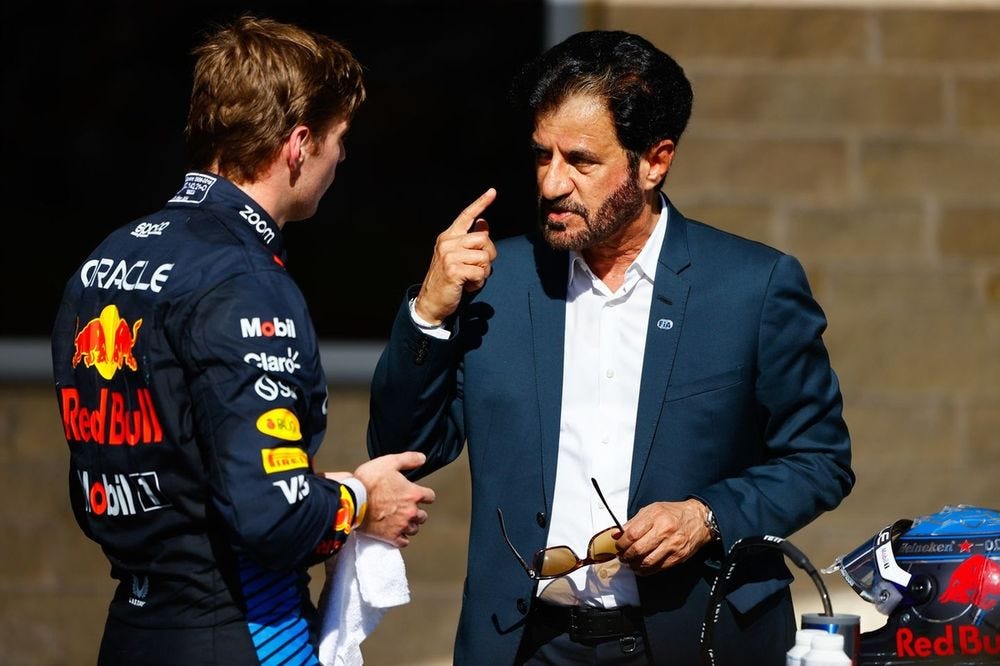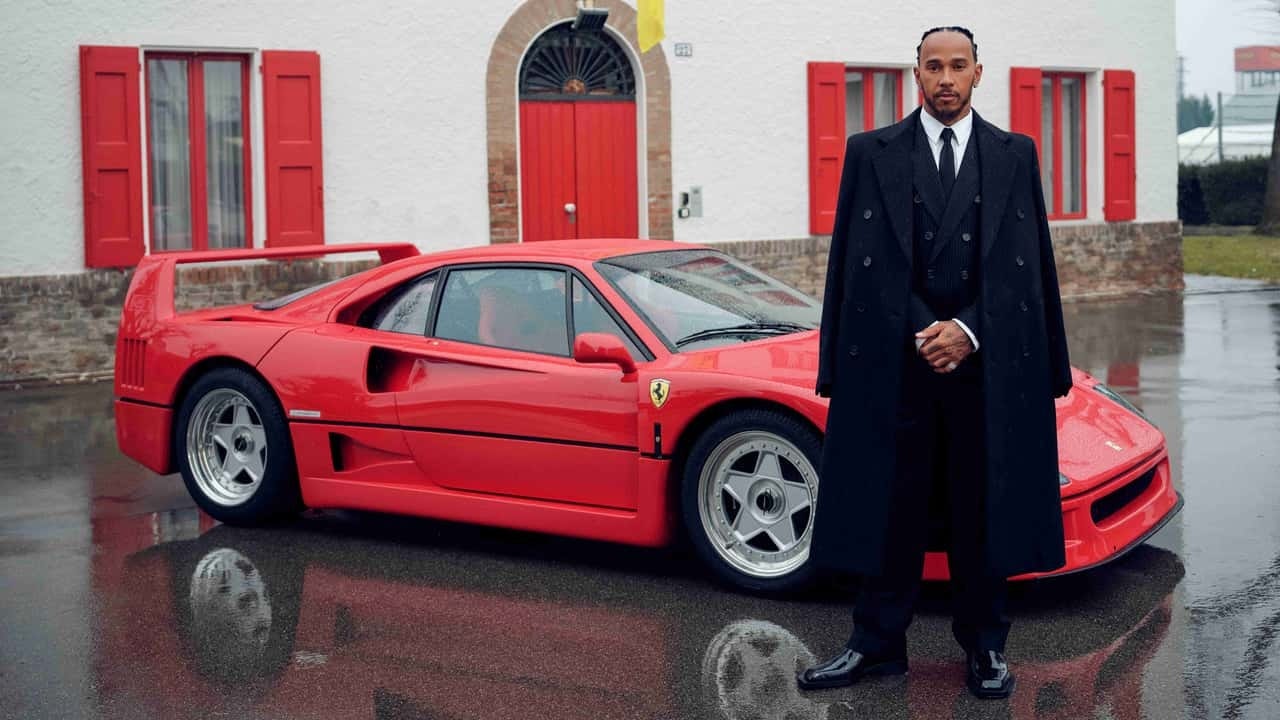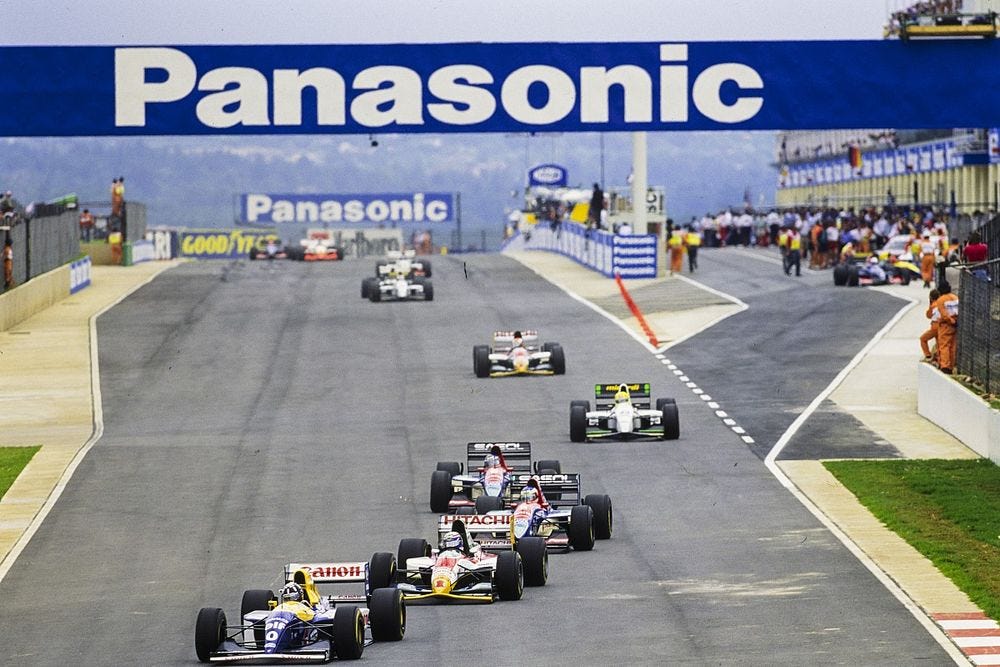Welcome to the first edition of The Undercut, a weekly newsletter round-up of the top storylines in racing brought to you by your favorite motorsport and enviro journo, Olivia Hicks. If you’re wondering “What the f*** is Formula 1?” Ask away! Leave a comment or send me a message with your burning questions.
The Next Frontier: New Year, New IndyCar
The NTT IndyCar Series signed a multi-year exclusive media rights deal with Fox Sports in June, ending a 16-year broadcasting agreement with NBC. While the move may seem little more than a channel switch, it ushers in a new era. As IndyCar rode Formula 1’s surge in popularity and simultaneously attempted to prove it was individual, the American racing series failed to exude anything resembling a personality. IndyCar is in a unique position: it brings former Formula 1 stars to the streets of Indiana yet holds onto its milk-drinking, all-American traditions. Somewhere in between NASCAR’s culture of corn, cussing and Coors Light and Formula 1’s champagne-soaked yacht decks, IndyCar has emerged as a refreshingly accessible fusion of two ends of the motor racing spectrum. A near-guarantee of on-track action and good racing has only boosted its image. Critics and fans alike pointed to its potential yet deemed it one big identity crisis without a marketing strategy. Despite races often featuring more rewind-worthy moments than the “upper echelon of motorsport” and the series collecting a roster of influencer talent, IndyCar has failed to make the public, or even Formula 1 viewers, care.
But Fox Sports is changing that. With four weeks until the 2025 season commences, the media and racing giant duo is releasing a string of promo clips short enough to engage TikTok attention spans and teasing a new look for the series: spunky served with a side of sex appeal and satire. The first two promos, introducing Team Penske’s Josef Newgarden and Chip Ganassi Racing’s Alex Palou, went viral, with fans on Instagram, X (formerly Twitter) and LinkedIn deeming it a resounding success. More than catchy copy or camera angles, the videos hinted that with Fox Sports’ help, IndyCar might acknowledge its marketability as more than Formula 1’s reserve driver pool and dumping ground.
Free Speech and Flexi-wings

In late January, Formula 1’s ruling body, the Fédération Internationale de l'Automobile (FIA), published a new set of sporting code regulations that limit racing drivers’ ability to criticize the FIA and use “offensive” language. For misconduct — defined as "the general use of language (written or verbal), gesture and/or sign that is offensive, insulting, coarse, rude or abusive and might reasonably be expected or be perceived to be coarse or rude or to cause offense, humiliation or to be inappropriate" and physical assault — the regulations outline three penalty levels. For a first offense, an athlete will receive a €40,000 fine. Second and third offenses come with higher monetary fines — €80,000 and €120,000 respectively. A second offense also carries a “suspended one-month suspension” and a third includes a one-month race suspension and a championship points deduction. Drivers will also be fined for “any words, deeds or writings that have caused moral injury or loss to the FIA, its bodies, its members or its executive officers, and more generally on the interest of motor sport and on the values defended by the FIA.” Drivers who make “political, religious and personal statements or comments notable in violation of the general principle of neutrality promoted by the FIA” without permission are also subject to fines. Ruling body president Mohammed Ben Sulayem — who has cracked down on political speech, including drivers kneeling before races — publicly backed President Donald Trump on Instagram following the 2024 election.
The pushback was swift and the sporting code amendments came after a season defined by swearing scandals and a clampdown on athletes’ freedom to openly criticize the governing body. An unnamed source told the BBC that the revisions happened via a “snap e-vote and with no consultation with other stakeholders or the GPDA (Grand Prix Drivers Association) or the FIA’s own drivers’ commission.”
The regulations follow a string of rocky revisions and the dissolution of transparency and accountability within the ruling body. In December, the FIA revised the audit and ethics committee statutes, outlining that ethics complaints are overseen by the FIA president and the ruling body’s senate president, rather than the senate. The audit committee will no longer investigate financial concerns independently. This change followed an investigation into FIA president Ben Sulayem. While the GPDA, the drivers’ union, did not comment on the code changes, the group has denounced driver misconduct punishment previously. In a November statement, the GPDA said “Driver monetary fines are not appropriate for our sport. For the past three years, we have called upon the FIA president to share the details and strategy regarding how the FIA’s financial fines are allocated and where the funds are spent…We once again request that the FIA president provides financial transparency and open dialogue with us.”
Turning gray areas black and white
The ruling body also updated technical regulations on Friday, stating that it would restrict flexi-wings — or the ability for the front and rear flap on the car to bend, creating a more aerodynamic and quick car. McLaren was scrutinized for a rear wing adjustment that acted like a turbo boost last season. Despite the team arguing their car was well within the technical regulations, McLaren agreed to make a minor adjustment to reduce the bend mid-season. The clamp-down is an attempt to level the playing field in 2025, according to the FIA.
The separation of media and motoring
The governing body parted ways with Johnny Herbert, a Formula 1 driver steward and media commentator, on Wednesday. The FIA stated the two roles were “incompatible.” Racing stewards consist of a group of four unpaid members of the ruling body who act as referees.
Formula 1 media was criticized last season for what some fans coined “British bias.” Herbert was outspoken about Max Verstappen’s driving style and received pushback, with critics questioning where the line between reporting and regulating was drawn.
McLaren team principal, Zak Brown, offered a solution: teams paying into a pot to fund full-time stewards.
A Rosso Corsa Red Debut
Lewis Hamilton has officially traded his silver arrows for a prancing horse. In late January, the seven-time world champion checked into Maranello and, clad in a double-breasted suit, promptly broke the internet with a single image: Hamilton, unsmiling, standing in front of a Ferrari F40. At 40 years old — well past retirement age in the world of Formula 1 — the British driver’s move to Ferrari was unexpected but came with a large paycheck: $100 million across two seasons. After 12 years with Mercedes, Hamilton formally joined the Italian automotive giant by gracing the crowds of local supporters. The scene was pope-like with Hamilton softly speaking broken Italian, shaking hands and walking through the city streets with his cherry Christian Louboutin red bottoms on display. Fans were quick to coin him the “People’s Prince.” In a debut test drive, Hamilton was giddy: “Driving a Ferrari car for the first time this morning was one of the best feelings of my life,” he said. “When I started the car up and drove through that garage door, I had the biggest smile on my face. It reminded me of the very first time I tested a Formula One car. It was such an exciting and special moment and here I am, almost 20 years later, feeling those emotions all over again.” In a second test on Wednesday, Hamilton crashed his Ferrari at the Circuit de Barcelona-Catalunya but came out unscathed.
A Bidding War Begins
Both South Africa and Rwanda are bidding to host a Formula 1 race in 2027, more than 30 years since the sport raced in Africa. As Formula 1 expands into the U.S. and Middle East, the sport’s popularity and potential in Africa have received little attention. Now, the two countries are attempting to convince the racing series that investment and interest are abundant.
When Formula 1 single-seaters first rounded the checkered flag in East London, a southeastern city in South Africa, in 1962, the country became one of the first outside of Europe to host a race. The series continued to race from 1967 to 1985 at the Kyalami Grand Prix circuit before political turmoil stemming from the anti-apartheid movement caused the race to drop from the calendar. Despite Africa’s growing interest in Formula 1 and status as host to the biggest rally car competition, it still faces the same obstacle as it did when Formula 1 briefly returned and then left again in 1992 and 1993: shifting public opinion. In the early ‘90s, Formula 1 axed South Africa’s spot on the calendar because of logistical and financial problems. And when the sport left the continent seven years earlier, unrest and safety were cited. Three decades later, Rwanda is attempting to squash both sportswashing accusations and the UN’s calls to withdraw its military from the Democratic Republic of Congo where a humanitarian crisis is unfolding and being titled as “the worst in the world.” Rwanda, the host of Formula 1’s prize-giving gala in December, claims that a Formula 1 race will boost economic activity and investment with a track expected to be constructed in the countryside, but South Africa’s plans for a Cape Town street circuit threaten to offer a modern and metropolitan spin. Meanwhile, Kyalami is vying for a historic track return. The South African government extended the bid deadline from Jan. 31 to March 18.
What I’ve been writing, reading and obsessed with this week
I’m a Gen Z Journalist. My Generation Doesn’t Know What That Means. - Olivia Hicks, Poynter Institute
A Nation Without a Driver: Sergio “Checo” Pérez’s Formula 1 exit means more than just sponsorship dollars for México - Olivia Hicks, Esses Magazine Newsletter
Stakeknife - BBC Sounds
The Message - Ta-Nehisi Coates
The Anti-Social Century - Derek Thompson, The Atlantic
Why do Wall Street analysts think you should buy F1 stock? - Paddock Project
Northern Ireland’s Invisible Border - VICE News
Departing the New York Times - Paul Krugman, The Contrarian
How the Art of Football is Bringing Fashion to Sports Merch - Daniel-Yaw Miller, SportsVerse
Media Literacy: Dead and Streaming - The Journal Catacombs
Question Box
New to Formula 1? Drop your burning questions in the comment section below or shoot me a message and I’ll unpack them in the next newsletter edition.







